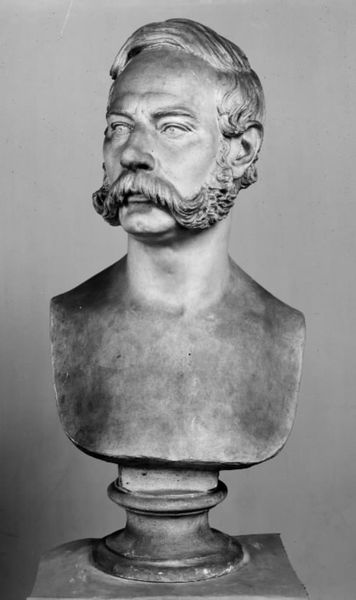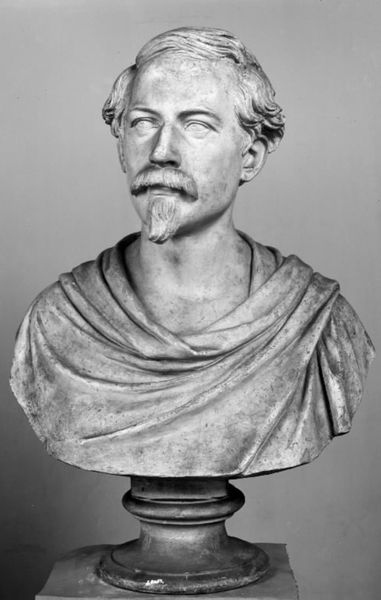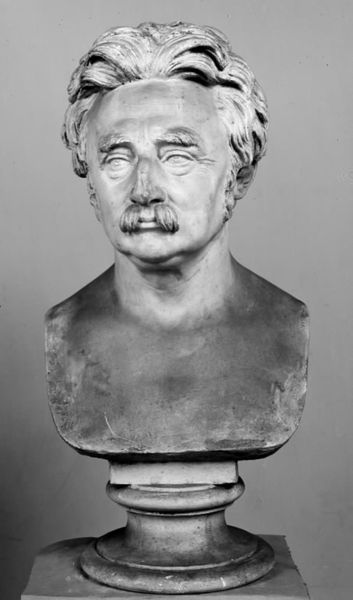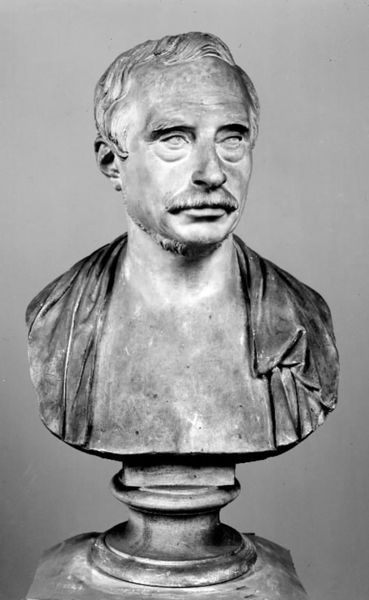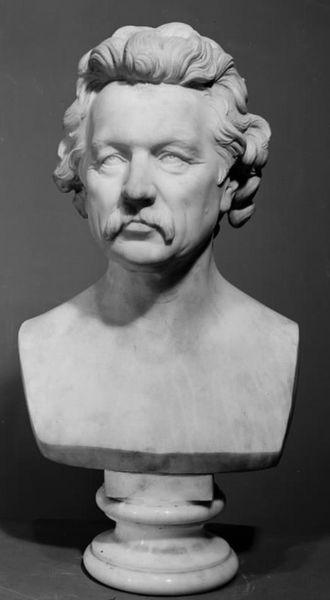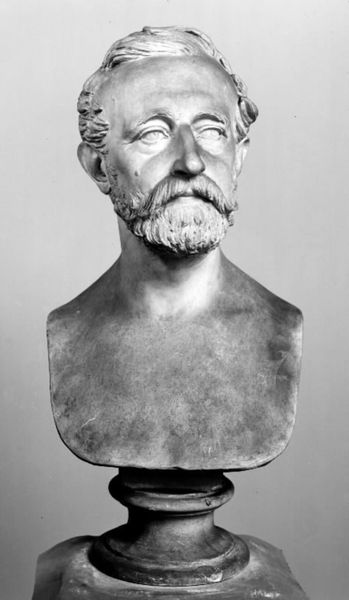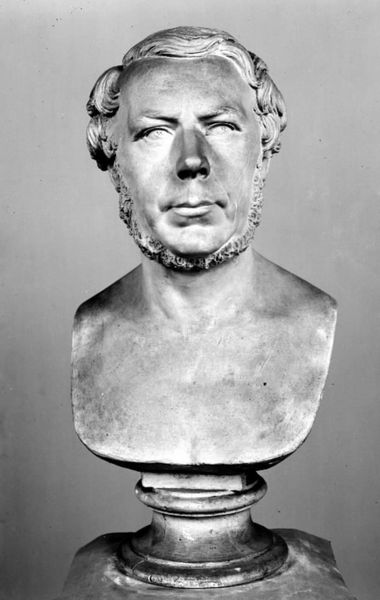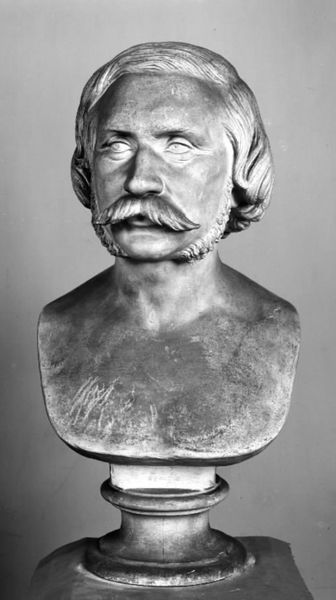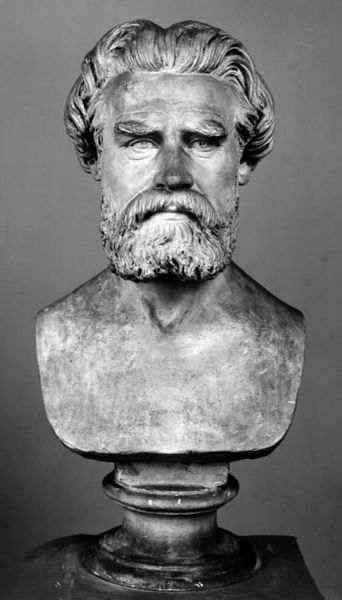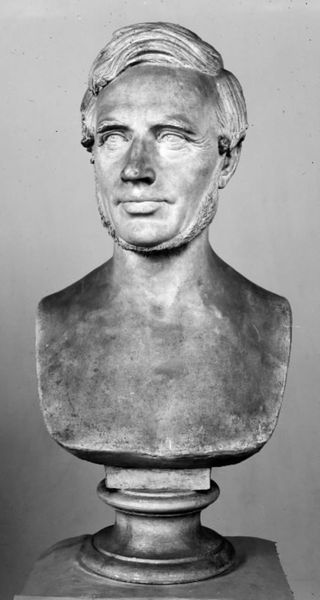
sculpture, marble
#
portrait
#
neoclacissism
#
sculpture
#
classical-realism
#
form
#
sculpture
#
academic-art
#
marble
Dimensions: 64.1 cm (height) (Netto)
Curator: This marble bust, "Digteren Christian Winther," crafted in 1858 by H.W. Bissen, presents a powerful figure. Editor: It's definitely imposing! The sharp lines and stark marble give it a real sense of authority. What should we consider when approaching this piece? Curator: Well, beyond its aesthetic qualities, let's think about the social implications. We see Winther, a celebrated poet, immortalized in marble. Who gets remembered and celebrated in this way, and why? Editor: That’s interesting. So, who had the power and resources to commission such a work and perpetuate Winther's image? Curator: Exactly. It makes us question the role of art in solidifying cultural narratives. Was this an attempt to elevate Winther’s status within a specific social or political structure of the time? Did Winther's work uphold or challenge prevailing social norms? Editor: I see your point. The sculpture’s not just about Winther's likeness, it's also a statement about cultural values. Curator: Absolutely. Consider the historical context: the mid-19th century. What socio-political currents were shaping Danish society? How did Winther's poetry engage with those issues? His poetry often focused on national identity and romantic themes; did this bust aim to solidify that image? Editor: It gives me a lot to consider about art's role in constructing fame and historical memory. It really underlines the need to look at art as more than just aesthetics. Curator: Precisely. Recognizing art as a reflection of power structures helps us see it critically and understand its impact on society.
Comments
No comments
Be the first to comment and join the conversation on the ultimate creative platform.
